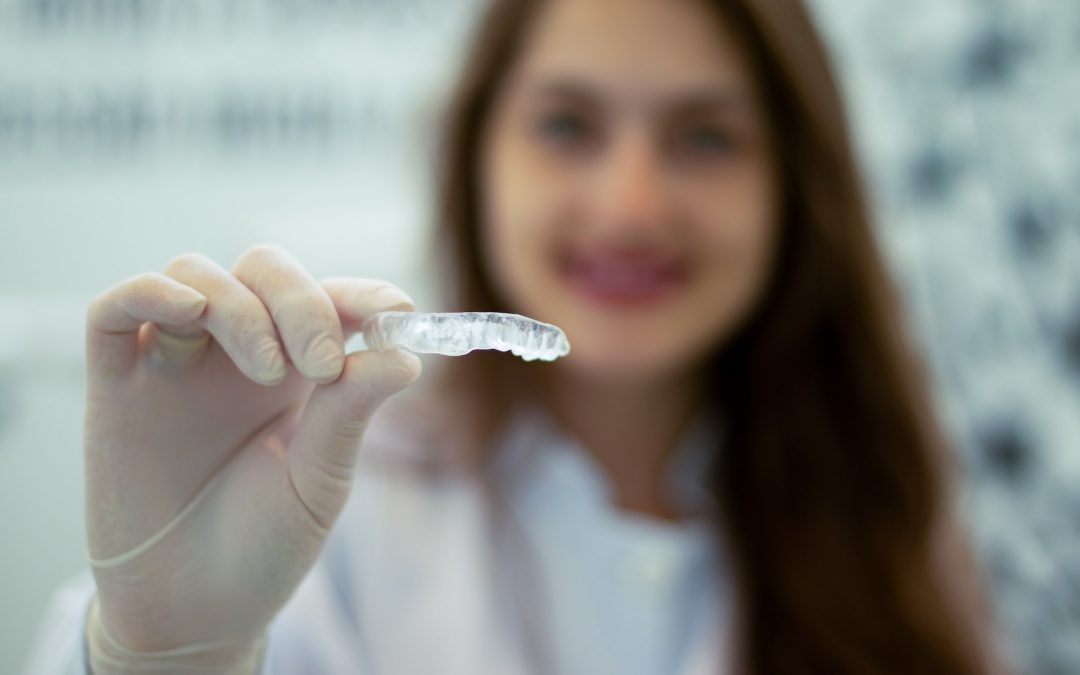Do you want a straight set of teeth but don’t want to wear standard bracketed braces? Invisalign treatment could be the solution. Inquire about this safe, dependable method of moving teeth into more natural positions when you schedule an appointment with us.
If you are going to go through the Invisalign treatment, you will need to take care of your teeth both during and after treatment for the best results.
Always brush your teeth after eating
One of the most recognised features of the Invisalign system is that patients can eat and drink whatever they want. Simply remove the clear aligner trays before eating or snacking! Simply brush and floss your teeth before replacing your aligners. Bacteria can then accumulate on and around the teeth and gums, generating extra plaque and putting you at risk of decay or gum disease.
Extra Invisalign care tip: Carry toothpaste, a toothbrush, and dental floss with you at all times. You’ll never be without these essential hygiene essentials again!
Clear plastic aligner trays should be cleaned
You should sanitise your aligner trays just like you would your teeth and gums. Scrub the tray well with a toothbrush and toothpaste before placing it in your mouth. During lengthier meals at home, soak your aligner tray in dentist-approved mouth rinse or dissolved antibacterial soap. Simply rinse the aligner thoroughly before re-inserting it. This prevents odor-causing germs and other undesired material from being redeposited onto your teeth by your tray.
Extra Invisalign care tip: Did you forget to use your special soap rinse? No worries. To get rid of the bulk of bacteria, simply wash your aligner tray with warm water. Then do a deep cleaning later.
Never “Experiment” with your inserted aligners
Do you have a habit of “flipping” your Invisalign transparent aligners while they are inside your mouth? Is it difficult for you to leave them alone? Invisalign is effective when the trays are worn for approximately 20-22 hours per day. You will not benefit from the Invisalign system if you continuously pull them off your teeth to “play” with them.
Extra Invisalign care tip: Enlist the assistance of a trusted family member, coworker, or friend to inform you if you are removing your Invisalign mindlessly.
Only whiten your teeth with your dentist’s permission
Many people who have Invisalign choose to whiten their newly whitened teeth. Consult your dentist before purchasing tooth whitening kits. He or she can assist you in locating a reputable, safe solution that will whiten your teeth without causing dental enamel damage, sensitivity, or pain.
Aligners should be replaced on a regular basis
Do you have problems sticking to a schedule? Set up reminders to remind you to switch out one aligner tray for another. If you do not adhere to the Invisalign schedule created specifically for your condition, your results may be jeopardised or postponed.
Extra Invisalign care tip: Do you have an iPhone? Set up reminders with your “Notes” feature. You can also utilise advanced email systems to delay the appearance of email reminders in your inbox.
Maintain your routine dental exams
As an Invisalign patient, you should always keep your dental check-ups and appointments on time. Even if you recently saw your dentist for an Invisalign check-up, schedule a cleaning appointment as well.
Extra Invisalign care tip: If at all possible, schedule your six-month cleanings in conjunction with your Invisalign follow-up appointments.
Keep aligner trays in your mouth for the appropriate time frames
Even if you are impatient, give your present aligner tray ample time to work. Attempting to shift your teeth too quickly by rapidly switching aligner trays might result in tooth damage and pain. Even if it appears that your present aligner trays have failed, they have not. Your teeth, in fact, require time to acclimate to each new position before moving on to the next.
Extra Invisalign care tip: Do not use discomfort to determine whether to change aligner trays. Discomfort normally subsides within a day or two of switching aligner trays.
Any dental problems should be reported to your dentist right once
Although some tooth discomfort is to be expected with Invisalign treatment, any unusual pain should be reported to your dentist. Loose teeth, inflamed gums, and other unusual oral health symptoms are all examples of this. It’s possible that the issue has nothing to do with Invisalign, but that doesn’t matter. Bringing any concerns to the attention of your dentist is always the best course of action.
Extra Invisalign care tip: Are you experiencing achiness after switching your aligner tray? Ibuprofen or acetaminophen may help. You should also avoid eating hard meals until your teeth become less sensitive.






